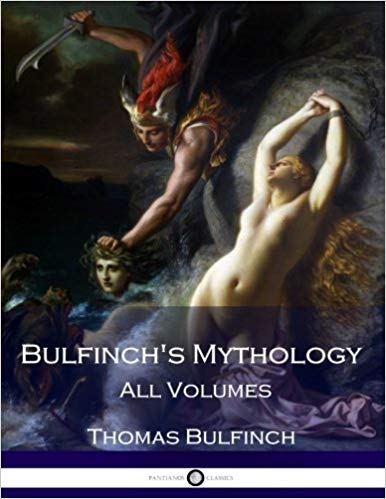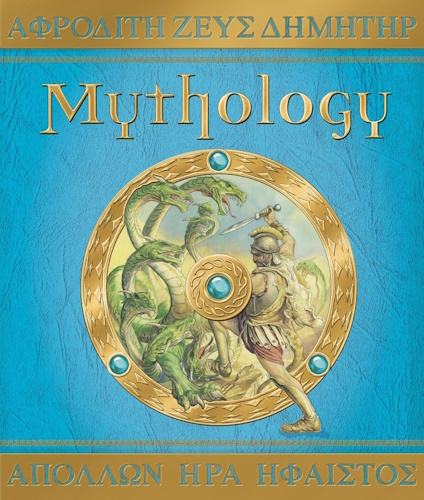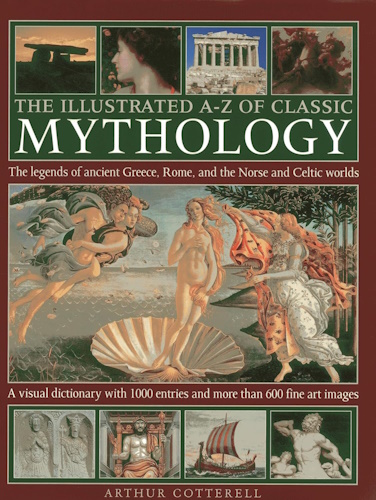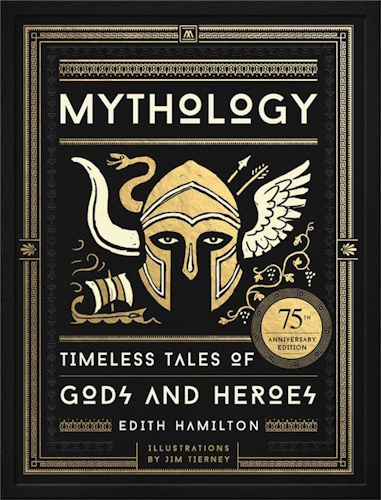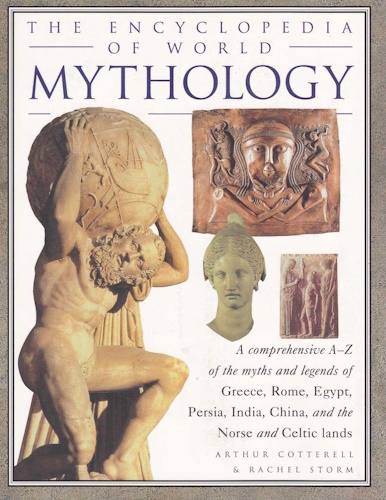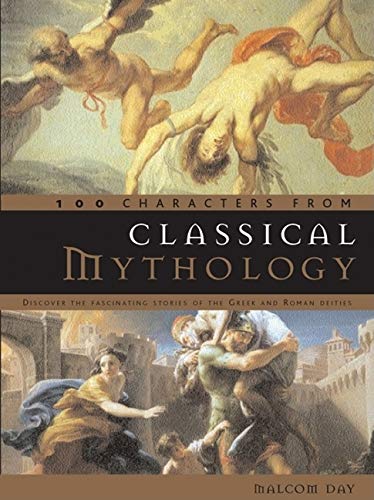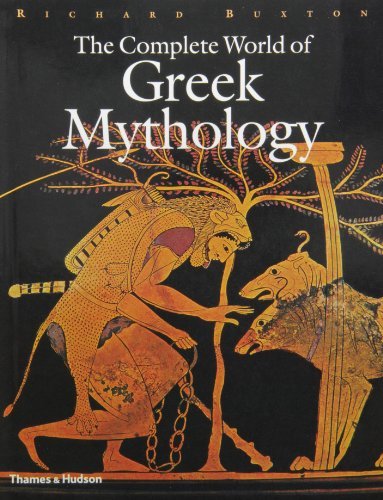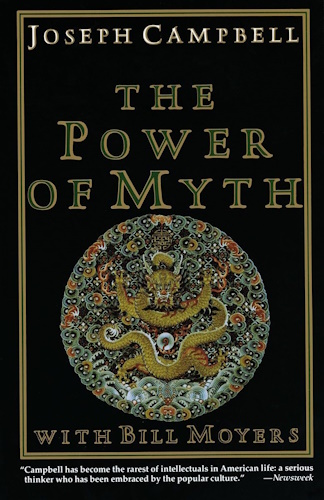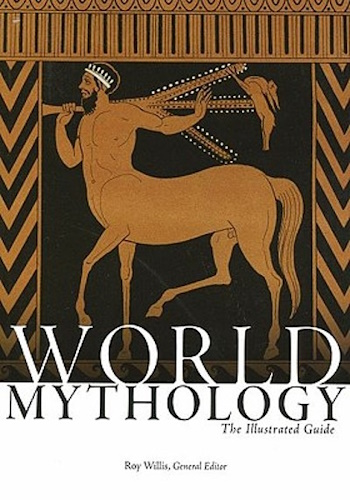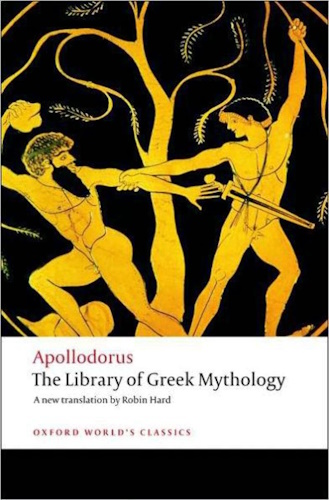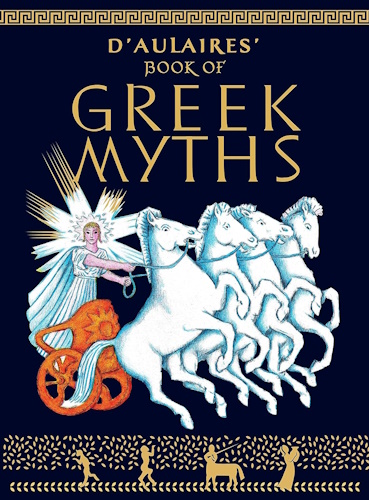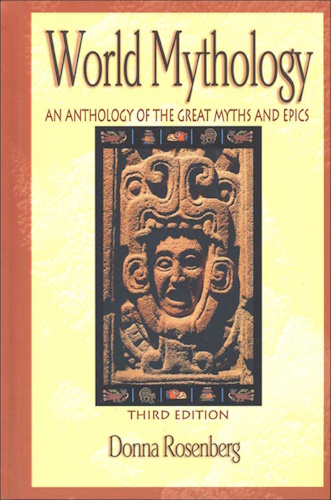
![]()
![]()
Part I.
King Arthur and His Knights.
Chapter VII.
The Story of Launcelot.– The Adventure of the Cart.
SO it befell in the month of May, Queen Guenever called unto her knights of the Table Round, and she gave them warning that early upon the morrow she would ride on maying into the woods and fields beside Westminster. "And I warn you that there be none of you but that he be well horsed, and that ye be all clothed in green, either in silk, either in cloth, and I shall bring with me ten ladies, and every knight shall have a lady behind him, and every knight shall have a squire and two yeomen, and I will that ye all be well horsed." So they made them ready in the freshest manner, and these were the names of the knights: Sir Kay the seneschal, Sir Agravaine, Sir Brandeles, Sir Sagramour le Desirus, Sir Dodynas le Sauvage, Sir Ozanna le Cure Hardy, Sir Ladynas of the Forest Savage, Sir Perseant of Inde, Sir Ironside that was called the knight of the red lawns, and Sir Pelleas the lover; and these ten knights made them ready in the freshest manner to ride with the queen. And so upon the morn they took their horses, with the queen, and rode on maying in woods and meadows, as it pleased them, in great joy and delight; for the queen had cast to have been again with King Arthur at the furthest by ten of the clock, and so was that time her purpose. Then there was a knight, that knight Meleagans, and he was son unto King Bagdemagus, and this knight had at that time a castle, of the gift of King Arthur, within seven miles of Westminster; and this knight Sir Meleagans loved passing well Queen Guenever, and so had he done long and many years. And he had lain in a wait for to steal away the queen, but evermore he forbore, because of Sir Launcelot, for in no wise would he meddle with the queen if Sir Launcelot were in her company, or else if he were near at hand to her. And at that time was such a custom the queen rode never without a great fellowship of men of arms about her; and they were many good knights, and the most part were young men that would have worship, and they were called the queen's knights, and never in no battle, tournament, nor joust, they bare none of them no manner of acknowledging of their own arms, but plain white shields, and thereby they were called the queen's knights. And then when it happed any of them to be of great worship by his noble deeds, then at the next feast of Pentecost, if there were any slain or dead, as there was no year that these failed, but some were dead, then was there chosen in his stead the most men of worship that were called the queen's knights. And thus they came up all first, or they were renowned men of worship, both Sir Launcelot and the remnant of them.
But this knight, Sir Meleagans, had espied the queen well and her purpose, and how Sir Launcelot was not with her, and how she had no men of arms with her but the ten noble knights all arrayed in green for maying. Then he provided him a twenty men of arms and an hundred archers, for to destroy the queen and her knights, for he thought that time was the best season to take the queen. So as the queen had mayed and all her knights, all were bedashed with herbs, mosses, and flowers, in the best manner and freshest. Right so came out of a wood Sir Meleagans with an eightscore men well harnessed, as they should fight in a battle of arrest, and bade the queen and her knights abide, for maugre their heads they should abide. "Traitor knight," said Queen Guenever, "what castest thou for to do? Wilt thou shame thyself? Bethink thee how thou art a king's son, and knight of the Table Round, and thou to be about to dishonor the noble king that made thee knight; thou shamest all knighthood and thyself, and me. I let thee wit, me shalt thou never shame, for I had lever cut my throat in twain than thou shouldst dishonor me." "As for all this language," said Sir Meleagans, "be it as it may, for wit you well, madam, I have loved you many a year, and never or now could I get you at such an advantage as I do now, and therefore I will take you as I find you." Then spake all the ten noble knights at once, and said: "Sir Meleagans, wit thou well ye are about to jeopard your worship to dishonor, and also ye cast to jeopard our persons; howbeit we be unarmed, ye have us at great avail, for it seemeth by you that ye have laid watch upon us; but rather than ye should put the queen to shame, find us all, we had as lief to depart from our lives, for if we other ways did we should be ashamed forever." Then Sir Meleagans said, "Dress you as well as you can, and keep the queen." Then all the ten knights of the Table Round drew their swords, and the other let run at them with their spears, and the ten knights manly abode them, and smote away their spears, that no spear did them none harm. Then they lashed together with swords, and anon Sir Kay, Sir Sagramour, Sir Agravaine, Sir Dodynas, Sir Ladynas, and Sir Ozanna were smitten to the earth with grimly wounds. Then Sir Brandiles, and Sir Persant, Sir Ironside, and Sir Pelleas fought long, and they were sorely wounded; for these ten knights or ever they were laid to the ground slew forty men of the boldest and best of them. So when the queen saw her knights thus dolefully wounded, and needs must be slain at the last, then for pity and sorrow she cried, "Sir Meleagans, slay not my noble knights, and I will go with thee upon this covenant, that thou save them, and suffer them to be no more hurt, with this, that they be led with me wheresoever thou leadest me; for I will rather slay myself than I will go with thee, unless that these my noble knights may be in my presence." "Madam," said Meleagans, "for your sake they shall be led with you into mine own castle, with that ye will be ruled and ride with me." Then the queen prayed the four knights to leave their fighting, and she and they would not part. "Madam," said Sir Pelleas, "we will do as ye do, for as for me I take no force of my life nor death." for Sir Pelleas gave such buffets that none armor might hold him.
Then by the queen's commandment they left battle, and dressed the wounded knights on horseback, some sitting, some overthwart their horses, that it was pity to behold them. And then Sir Meleagans charged the queen and all her knights that none of all her fellowship should depart from her; for full sore he dreaded Sir Launcelot du Lac lest he should have any knowledging. All this espied the Queen and privily she called unto her a child of her chamber, that was swiftly horsed, to whom she said, "Go thou, when thou seest thy time, and bear this ring to Sir Launcelot du Lac, and pray him, as he loveth me, that he will see me, and rescue me if ever he will have joy of me; and spare thou not thy horse," said the queen, "neither for water nor for land." So the child espied his time, and lightly he took his horse with the spurs, and departed as fast as he might. And when Sir Meleagans saw him so flee he understood that it was by the queen's commandment for to warn Sir Launcelot. Then they that were best horsed chased him, and shot at him, but from them all the child went suddenly; and then Sir Meleagans said unto the queen, "Madam, ye are about to betray me, but I shall ordain for Sir Launcelot that he shall not come lightly to you." And then he rode with her and them all to his castle in all the haste that he might. And by the way Sir Meleagans laid in an ambushment the best archers that he might get in his country, to the number of thirty, to await upon Sir Launcelot, charging them that if they saw such a manner of knight come by the way upon a white horse, that in any wise they slay his horse, but in no manner of wise have not ado with him bodily, for he was overhard to be overcome. So this was done, and they were come to his castle, but in no wise the queen would never let none of the ten knights and her ladies out of her sight, but always they were in her presence. So when the child was departed from the fellowship of Sir Meleagans, within awhile he came to Westminster. And anon he found Sir Launcelot. And when he had told him his message, and delivered him the queen's ring, "Alas!" said Sir Launcelot, "now am I shamed forever, unless that I may rescue that noble lady from dishonor." Then eagerly he asked his armor, and ever the child told Sir Launcelot how the ten knights fought marvellously, and how Sir Pelleas, and Sir Ironside, and Sir Brandiles, and Sir Persant of Inde fought strongly, but as for Sir Pelleas there might none withstand him, and how they all fought till at last they were laid to the earth, and then the queen made appointment for to save their lives, and go with Sir Meleagans. "Alas!" said Sir Launcelot, "that most noble lady that she should be so destroyed! I had lever," said Sir Launcelot, "than all France that I had been there well armed." So when Launcelot was armed and upon his horse, he prayed the child of the queen's chamber to warn Sir Lavaine how suddenly he was departed, and for what cause,– "and pray him, as he loveth me, that he will hie him after me, and that he stint not until he come to the castle where Sir Meleagans abideth or dwelleth, for there," said Launcelot, "shall he hear of me if I am a man living, and rescue the queen and, her ten knights, the which he traitorously hath taken, and that shall I prove upon his head, and all them that hold with him."
Then Sir Launcelot rode as fast as he might, and he took the water at Westminster, and made his horse to swim over Thames at Lambeth. And then within a while he came to the place where the ten knights had fought with Sir Meleagans, and then Sir Launcelot followed that track until he came to a wood, and there was a straight way, and there the thirty archers bade Sir Launcelot turn again, and follow no longer that track. "What commandment have ye thereto," said Sir Launcelot, "to cause me, that am a knight of the Round Table, to leave my right way?" "This way shalt thou leave, or else thou shalt go it on thy foot, for wit thou well thy horse shall be slain." "That is little mastery," said Launcelot, "to slay my horse, but as for myself, when my horse is slain, I give right nought for you, not if ye were five hundred more." So then they shot Sir Launcelot's horse, and smote him with many arrows. And then Sir Launcelot avoided his horse and went on foot; but there were so many ditches and hedges betwixt them and him that he might meddle with none of them. "Alas, for shame," said Sir Launcelot, "that ever one knight should betray another knight, but it is an old saw, ‘A good man is never in danger but when he is in danger of a coward.'" Then Sir Launcelot went a while, and then he was foul cumbered of his armor, his shield, and his spear, and all that belonged to him. Wit ye well he was sore annoyed, and full loth he was to leave anything that belonged to him, for he dreaded sore the treason of Sir Meleagans. And then by fortune there came by a cart that came thither for to fetch wood.
Now at this time carts were but little used save for carrying offal or such like, and for conveying criminals to execution. But Sir Launcelot took no thought save of rescuing the queen. "Say me, carter," said he, "what shall I give thee for to suffer me to leap into thy cart, and that thou shalt bring me unto a castle within this two mile?" "Thou shalt not come within my cart," said the carter, "for I am sent for to fetch wood for my lord Sir Meleagans." "With him would I speak." "Thou shalt not go with me," said the carter. Then Sir Launcelot lept to him, and "gave him such a buffet that he fell to the earth stark dead. Then the other carter, his fellow, thought to have gone the same way, and then he cried, "Fair lord, save my life, and I shall bring you where you will."
So then Sir Launcelot placed himself in the cart, and only lamented that with much jolting he made but little progress. Then it happened Sir Gawain passed by, and seeing an armed knight travelling in that unusual way, he drew near to see who it might be. Then Sir Launcelot told him how the queen had been carried off, and how, in hastening to her rescue, his horse had been disabled, and he had been compelled to avail himself of the cart rather than give up Then Sir Gawain said, "Surely it is unworthy of a to travel in such sort!" but Sir Launcelot heeded him not.
At nightfall they arrived at a castle, and the lady thereof came out at the head of her damsels to welcome Sir Gawain. But to admit his companion, whom she supposed to be a criminal, or at least a prisoner, it pleased her not; however, to oblige Sir Gawain, she consented. At supper Sir Launcelot came near being consigned to the kitchen, and was only admitted to the lady's table at the earnest solicitation of Sir Gawain. Neither would the damsels prepare a bed for him. He seized the first he found unoccupied, and was left undisturbed.
Next morning he saw from the turrets of the castle a train accompanying a lady, whom he imagined to be the queen. Sir Gawain thought it might be so, and became equally eager to depart. The lady of the castle supplied Sir Launcelot with a horse, and they traversed the plain at full speed. They learned from some travellers whom they met that there were two roads which led to the castle of Sir Meleagans. Here therefore the friends separated. Sir Launcelot found his way beset with obstacles, which he encountered successfully, but not without much loss of time. As evening approached he was met by a young and sportive damsel, who gayly proposed to him a supper at her castle. The knight, who was hungry and weary, accepted the offer, though with no very good grace. He followed the lady to her castle, and ate voraciously of her supper, but was quite impenetrable to all her amorous advances. Suddenly the scene changed, and he was assailed by six furious ruffians, whom he dealt with so vigorously that most of them were speedily disabled, when again there was a change, and he found himself alone with his fair hostess, who informed him that she was none other than his guardian fairy, who had but subjected him to tests of his courage and fidelity. The next day the fairy brought him on his road, and before parting gave him a ring, which she told him would by its changes of color disclose to him all enchantments, and enable him to subdue them.
Sir Launcelot pursued his journey, being but little troubled save by the taunts of travellers, who all seemed to have learned by some means his disgraceful drive in the cart. One, more insolent than the rest, had the audacity to interrupt him during dinner, and even to risk a battle in support of his pleasantry. Launcelot, after an easy victory, only doomed him to be carted in his turn.
At night he was received at another castle, with great apparent hospitality, but found himself in the morning in a dungeon and loaded with chains. Consulting his ring, and finding that this was an enchantment, he burst his chains, seized his armor in spite of the visionary monsters who attempted to defend it, broke open the gates of the tower, and continued his journey. At length his progress was checked by a wide and rapid torrent, which could only be passed on a narrow bridge, on which a false step would prove his destruction. Launcelot, leading his horse by the bridle, and making him swim by his side, passed over the bridge, and was attacked, as soon as he reached the bank, by a lion and a leopard, both of which he slew, and then, exhausted and bleeding, seated himself on the grass, and endeavored to bind up his bounds, when he was accosted by Brademagus, the father of Meleagans, whose castle was then in sight, and at no great distance. The king, no less courteous than his son was haughty and insolent, after complimenting Sir Launcelot on the valor and skill he had displayed in the perils of the bridge and the wild beasts, offered him his assistance, and informed him that the queen was safe in his castle, but could only be rescued by encountering Meleagans. Launcelot demanded the battle for the next day, and accordingly it took place, at the foot of the tower, and under the eyes of the fair captive. Launcelot was enfeebled by his wounds, and fought not with his usual spirit, and the contest for a time was doubtful; till Guenever exclaimed, "Ah, Launcelot! my knight, truly have I been told that thou art no longer worthy of me!" These words instantly revived the drooping knight; be resumed at once his usual superiority, and soon laid at his feet his haughty adversary.
He was on the point of sacrificing him to his resentment when Guenever, moved by the entreaties of Brademagus, ordered him to withhold the blow, and he obeyed. The castle and its prisoners were now at his disposal. Launcelot hastened to the apartment of the queen, threw himself at her feet, and was about to kiss her hand, when she exclaimed, "Ah, Launcelot! why do I see thee again, yet feel thee to be no longer worthy of me, after having been disgracefully drawn about the country in a–" She had not time to finish the phrase, for her lover suddenly started from her, and bitterly lamenting that he had incurred the displeasure of his sovereign lady, rushed out of the castle, threw his sword and his shield to the right and left, ran furiously into the woods, and disappeared.
It seems that the story of the abominable cart, which haunted Launcelot at every step, had reached the ears of Sir Kay, who had told it to the queen, as a proof that her knight must have been dishonored. But Guenever had full leisure to repent the haste with which she had given credit to the tale. Three days elapsed, during which Launcelot wandered without knowing where he went, till at last he began to reflect that his mistress had doubtless been deceived by misrepresentation, and that it was his duty to set her right. He therefore returned, compelled Meleagans to release his prisoners, and, taking the road by which they expected the arrival of Sir Gawain, had the satisfaction of meeting him the next day; after which the whole company proceeded gayly towards Camelot.
-
Urantia Book, 44:0.11 - The Celestial Artisans
Never in your long ascendancy will you lose the power to recognize your associates of former existences. Always, as you ascend inward in the scale of life, will you retain the ability to recognize and fraternize with the fellow beings of your previous and lower levels of experience. Each new translation or resurrection will add one more group of spirit beings to your vision range without in the least depriving you of the ability to recognize your friends and fellows of former estates.
-
Princess Bride 1987 Wallace Shawn (Vizzini) and Mandy Patinkin (Inigo Montoya)
Vizzini: HE DIDN'T FALL? INCONCEIVABLE.
Inigo Montoya: You keep using that word. I do not think it means what you think it means. -
Urantia Book, 117:4.14 - The Finite God
And here is mystery: The more closely man approaches God through love, the greater the reality -- actuality -- of that man. The more man withdraws from God, the more nearly he approaches nonreality -- cessation of existence. When man consecrates his will to the doing of the Father's will, when man gives God all that he has, then does God make that man more than he is.
-
Urantia Book, 167:7.4 - The Talk About Angels
"And do you not remember that I said to you once before that, if you had your spiritual eyes anointed, you would then see the heavens opened and behold the angels of God ascending and descending? It is by the ministry of the angels that one world may be kept in touch with other worlds, for have I not repeatedly told you that I have other sheep not of this fold?"
-
Urantia Book, Foreword - 0:12.12 - The Trinities
But we know that there dwells within the human mind a fragment of God, and that there sojourns with the human soul the Spirit of Truth; and we further know that these spirit forces conspire to enable material man to grasp the reality of spiritual values and to comprehend the philosophy of universe meanings. But even more certainly we know that these spirits of the Divine Presence are able to assist man in the spiritual appropriation of all truth contributory to the enhancement of the ever-progressing reality of personal religious experience—God-consciousness.
-
Urantia Book, 1:4.3 - The Mystery Of God
When you are through down here, when your course has been run in temporary form on earth, when your trial trip in the flesh is finished, when the dust that composes the mortal tabernacle "returns to the earth whence it came"; then, it is revealed, the indwelling "Spirit shall return to God who gave it." There sojourns within each moral being of this planet a fragment of God, a part and parcel of divinity. It is not yet yours by right of possession, but it is designedly intended to be one with you if you survive the mortal existence.
-
Urantia Book, 1:4.1 - The Mystery Of God
And the greatest of all the unfathomable mysteries of God is the phenomenon of the divine indwelling of mortal minds. The manner in which the Universal Father sojourns with the creatures of time is the most profound of all universe mysteries; the divine presence in the mind of man is the mystery of mysteries.
-
Urantia Book, 1:4.6 - The Mystery Of God
To every spirit being and to every mortal creature in every sphere and on every world of the universe of universes, the Universal Father reveals all of his gracious and divine self that can be discerned or comprehended by such spirit beings and by such mortal creatures. God is no respecter of persons, either spiritual or material. The divine presence which any child of the universe enjoys at any given moment is limited only by the capacity of such a creature to receive and to discern the spirit actualities of the supermaterial world.
-
Urantia Book, 11:0.1 - The Eternal Isle Of Paradise
Paradise is the eternal center of the universe of universes and the abiding place of the Universal Father, the Eternal Son, the Infinite Spirit, and their divine co-ordinates and associates. This central Isle is the most gigantic organized body of cosmic reality in all the master universe. Paradise is a material sphere as well as a spiritual abode. All of the intelligent creation of the Universal Father is domiciled on material abodes; hence must the absolute controlling center also be material, literal. And again it should be reiterated that spirit things and spiritual beings are real.
-
Urantia Book, 50:6.4 - Planetary Culture
Culture presupposes quality of mind; culture cannot be enhanced unless mind is elevated. Superior intellect will seek a noble culture and find some way to attain such a goal. Inferior minds will spurn the highest culture even when presented to them ready-made.
-
Urantia Book, 54:1.6 - True And False Liberty
True liberty is the associate of genuine self-respect; false liberty is the consort of self-admiration. True liberty is the fruit of self-control; false liberty, the assumption of self-assertion. Self-control leads to altruistic service; self-admiration tends towards the exploitation of others for the selfish aggrandizement of such a mistaken individual as is willing to sacrifice righteous attainment for the sake of possessing unjust power over his fellow beings.
-
Urantia Book, 54:1.9 - True And False Liberty
How dare the self-willed creature encroach upon the rights of his fellows in the name of personal liberty when the Supreme Rulers of the universe stand back in merciful respect for these prerogatives of will and potentials of personality! No being, in the exercise of his supposed personal liberty, has a right to deprive any other being of those privileges of existence conferred by the Creators and duly respected by all their loyal associates, subordinates, and subjects.
-
Urantia Book, 54:1.8 - True And False Liberty
There is no error greater than that species of self-deception which leads intelligent beings to crave the exercise of power over other beings for the purpose of depriving these persons of their natural liberties. The golden rule of human fairness cries out against all such fraud, unfairness, selfishness, and unrighteousness.
